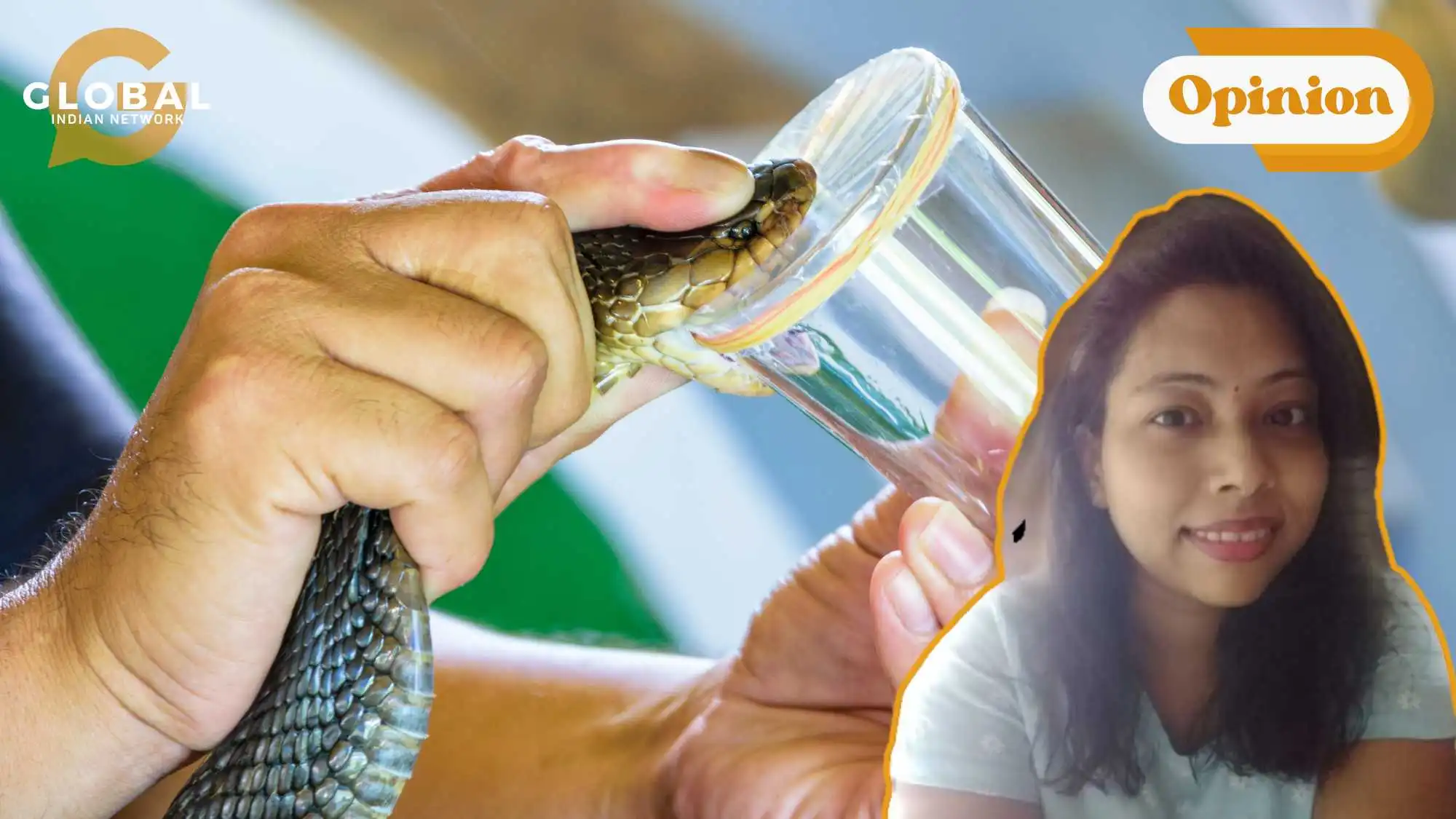Recently, Elvish Yadav, winner of Bigg Boss OTT, was arrested. Do you know why? For arranging a party. Well, I know the next question is coming up. Now, how on earth can anyone be jailed for organising a party? Right! He got arrested for allegedly supplying snake venom for recreational use at his rave party. Now, the next question that comes to your mind is, how can anyone take deadly snake venom into their bodies? Well, stick around to learn more about snake venom addiction!
Many tales emerge of individuals entangled in the treacherous web of snake venom addiction. One more such narrative recounts the journey of a man, a musician, who sought solace from alcoholism in the venomous embrace of serpents.
Snake venom, a mix of potent toxins designed by nature to immobilise prey, has intrigued humankind for centuries. While history says it has medicinal properties, a disturbing trend has emerged in recent times – snake venom addiction. This hazardous practice, primarily misunderstood and dangerously underestimated, poses significant health risks and societal challenges. Let's explore this phenomenon that showcases the complexities of human behaviour and the depths of substance abuse.
Snake Venom as a Recreational Drug
Now, the trend of recreational use of snake venom is exponentially increasing, where the allure of psychoactive experiences lures individuals into the web of "psychonauts" (a psychonaut is someone who explores altered states of consciousness, especially through hallucinatory drugs), where snake venom serves as both elixir and poison.
Perils of Snake Venom Addiction
The hazards of snake venom addiction extend far beyond physical affliction. While the immediate consequences manifest in symptoms ranging from pain and swelling to paralysis and death, the insidious nature of addiction also causes psychological torment. Anxiety, psychosis, and a vicious cycle of dependency grip the souls of this deadly obsession, which turns addictive.
The Science Behind Snake Venom Addiction
While the precise mechanisms driving snake venom addiction remain a mystery, scientific inquiry offers glimpses into its dark underpinnings. According to a study by the National Library of Medicine, interactions with the brain's reward system, coupled with the development of tolerance, conspire to forge chains of dependency that bind individuals to their venomous vice. The biochemical pathways and psychological cravings make this addiction as complex as the venom itself.
Snake Venom in Medicine and Research
From lifesaving medications derived from viper proteins to groundbreaking research aimed at combating cancer and stroke, the venomous arsenal of serpents holds promise in the fight against human afflictions. Yet, as we tread the fine line between healing and harm, caution must temper our enthusiasm, lest we unleash forces beyond our control.
Captopril, a medication used to treat high blood pressure and heart failure, is derived from a venom protein found in the Brazilian viper.
Eptifibatide medication, which prevents blood clots after heart attacks, is based on a protein found in rattlesnake venom.
Now, let's explore the other side of the coin; against the backdrop of addiction lurks a sobering reality – the global surge of snakebites.
According to the World Health Organization, approximately 5.4 million individuals across the globe experience snakebites annually, leading to 1.8 to 2.7 million cases of envenomation.
Each year, an estimated 81,410 to 137,880 fatalities result from snakebites, with approximately three times as many instances of amputations and other enduring disabilities attributed to such incidents.
Why the Lack of Statistics on Snakebites for Intoxication?
As we confront this void in our understanding, many factors emerge to conceal the truth. The rarity of snake venom addiction, coupled with social stigma and the challenges of accurate diagnosis, conspire to cloak this phenomenon in shadow. Thus, while the toll of snakebites on human lives is well-documented, the silent suffering of those ensnared by addiction remains largely invisible.
Conclusion
Eradicating snake venom addiction requires a collective effort from individuals, healthcare professionals, law enforcement, and wildlife conservation organisations. By working together, we can safeguard human health, protect vulnerable snake populations, and ensure a future where these fascinating creatures continue to thrive. Only through understanding and compassion can we hope to unravel the mysteries of snake venom addiction and pave a path toward healing and redemption.
Did you feel this snake venom addiction was something strange and new? Let us know in the comment section below.
If you have burning thoughts or opinions to express, please feel free to reach out to us at larra@globalindiannetwork.com.










